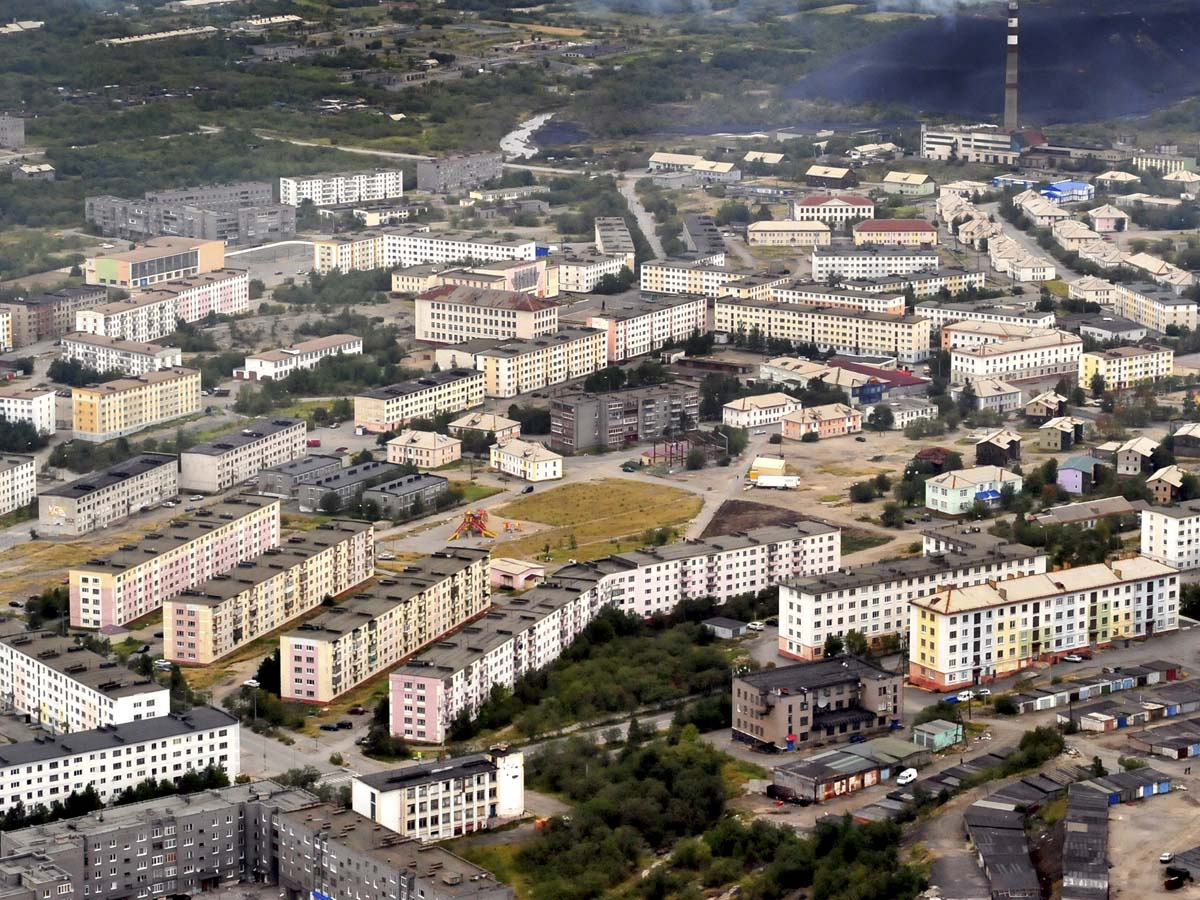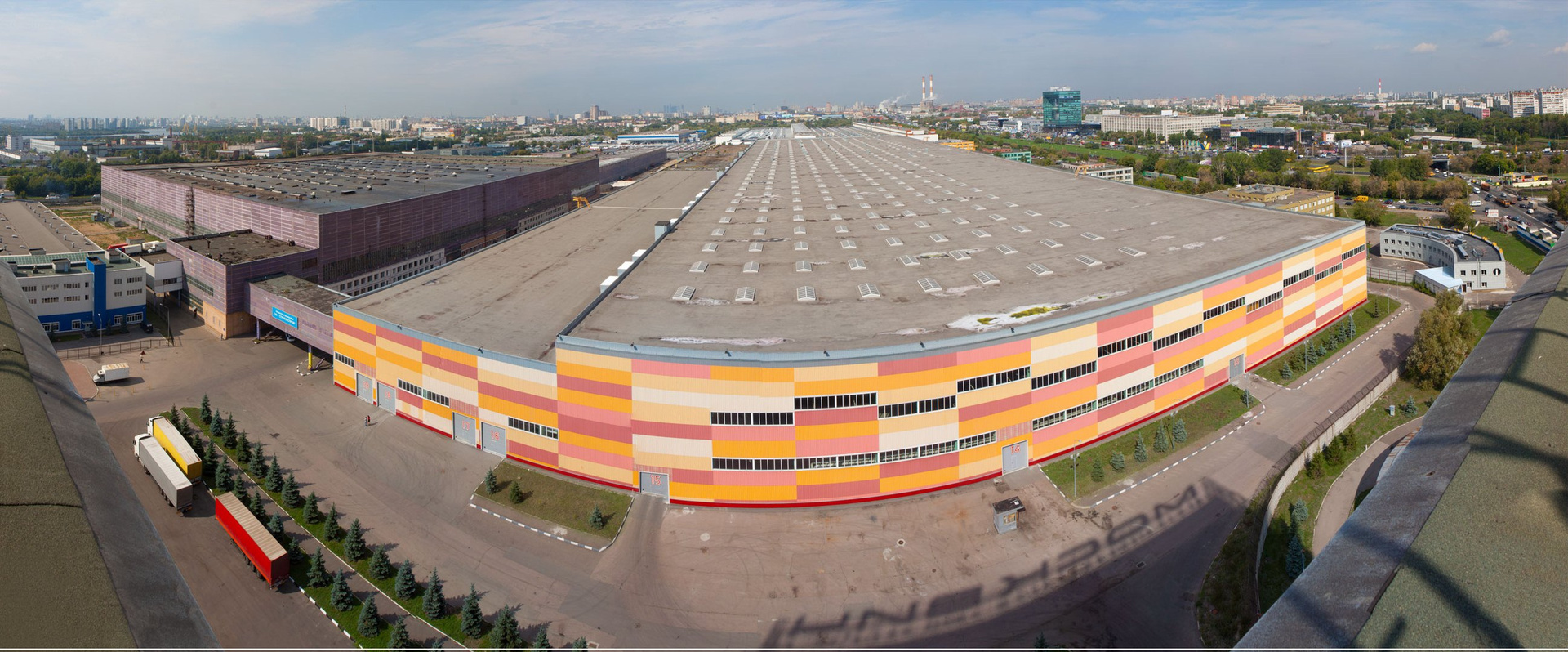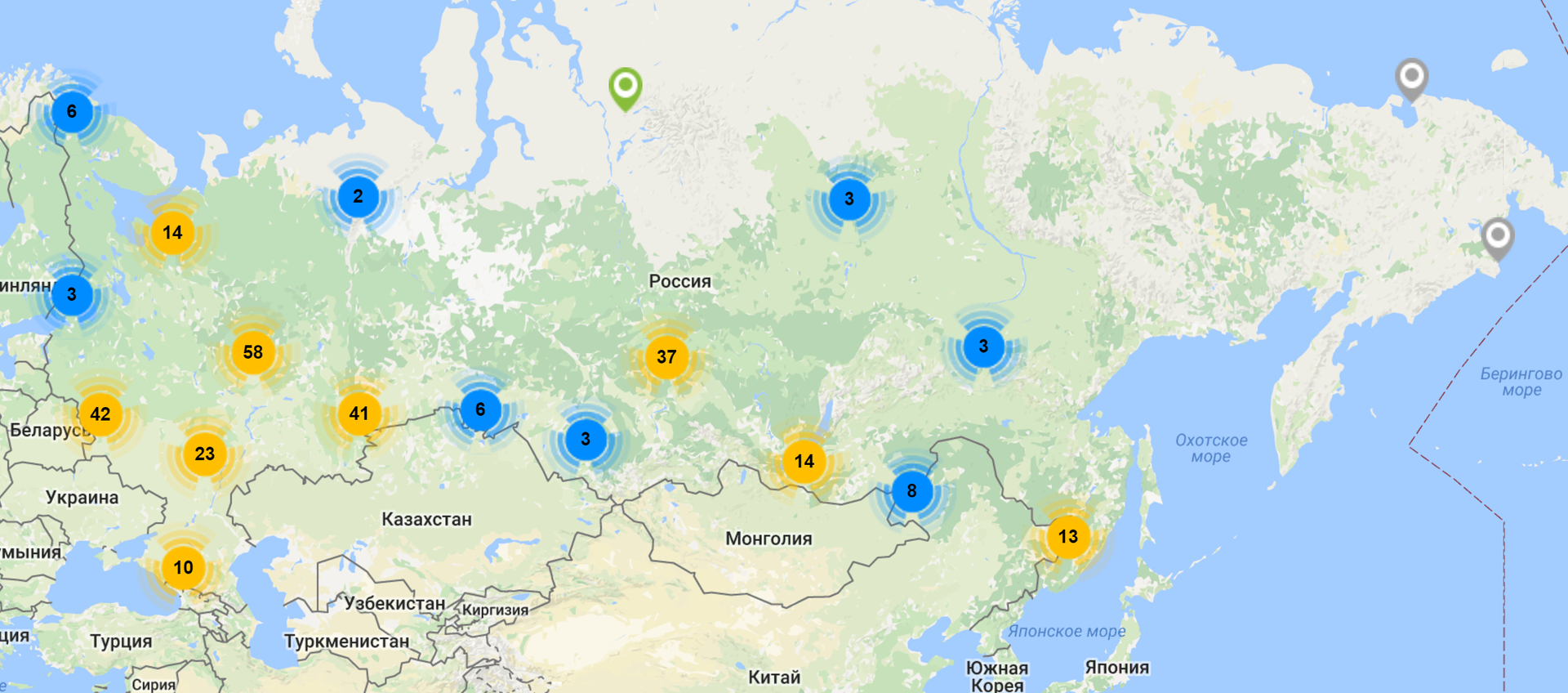One of the main problems faced by urban development institutions around the world is the “rusty belt”. These are industrial objects left over from the days of the industrial revolution. Such objects require redevelopment. And it is important to conduct it in such a way as to make the areas as efficient as possible, bringing income to the city, and at the same time convenient for the residents. When we talk about areas like Puerto Madero, located in the very center of large cities, it’s initially easier to work with them - the number of residents and organizations in such cities is growing, they need new areas.
But what to do with urban-type settlements in which the population has been declining for the last ten to twenty years? How to attract people, how to make them stay? This question is much more complicated, and so far no one can give an exact answer to it, there is no reliable recipe. But we can see how they are now working on this issue in Russia.
 Nickel, Murmansk region
Nickel, Murmansk regionRedevelopment of industrial zone in Moscow
The name “Rusty Belt” was originally meant to be part of the Midwest and East Coast of the United States, in which steel production and other heavy industry were concentrated from the beginning of industry until the 1970s. These are areas of New York, regions in Pennsylvania, Ohio, Indiana, Michigan and Illinois and others. In the 1970s and 1980s, the production of steel, automobiles and other industries was reduced, some of them were brought to other countries where labor resources were cheaper. Plants stopped, people lost their jobs, the quality of life declined, foreign debt grew.
Now the concept of "rusty belt" is used for all urban industrial sites, "slow down" or stopped altogether. Due to such facilities, the area of the city or village is increased, transport accessibility is reduced relative to important administrative or financial resources. Sometimes outdated production continues to pollute the environment, which affects the health of residents. Sometimes it is the only production, only it ensures the life of the city itself.
In Moscow and St. Petersburg, the total area of industrial zones is 14,000 hectares. Another 4,000 hectares of such territories are in 13 million cities of Russia. Now Moscow has begun to actively deal with this, and not without success. Many old buildings have offices and apartments, calling them the buzzword “loft”. On the territory of the former Russian Association of Beer and Medovar in Moscow, a cult center for contemporary art,
Winzavod , was built.
Separately, it is worth noting the existing
Technopolis "Moscow" , located on the territory of the former automobile plant named after Lenin Komsomol (AZLK) with an area of 32 hectares. To work on Technopolis in 2013, the Government of Moscow created a special working group. It includes experts from Russia, USA, Canada, Germany, France in the field of innovation promotion and the creation of specialized territories. Now Technopolis is operating, high-tech productions are located in it, events such as the Open Innovations Forum are held. For example, the leading world optoelectronics developer NeoPhotonics works in Technopolis - I published a
photo tour of his clean room .

In 2014, the Moscow Government decided to implement a project for redeveloping the territory of the plant AMO ZIL with the involvement of private investors. It is interesting to observe the rising cost of land. Initially it was 10 million dollars. After developing the concept - 40 million dollars. At the stage of the finished master plan, the plot was already worth $ 100 million. And after commissioning, the market value of the territory of the former plant will be already $ 3 billion. In 2030, 4.5 million square meters of housing and offices will be located on the ZIL Peninsula. In one part will be placed the residential complex "Zilart", the other will be reserved for offices and production.

Nickel: a bright example of a mono-town
In the comments to my
previous article, they expressed the opinion that it is possible to sweep and paint any old factory so that it becomes a “successful redevelopment case”. Of course, this is possible, but under important conditions: when the complex of buildings is located inside a densely populated city, in which a lot of innovative, high-tech companies and educational institutions are already concentrated, and people constantly arrive in this city and need new premises for offices, industries and housing. .
When we talk about a city with a declining population, with one factory on the outskirts, to which residents go by bus for half an hour, this does not work. Such a city should solve a number of problems, one of which is to attract investments. Suppose you can take another debt from the federal budget. But how to spend this money? And even these questions pale before others: how to motivate people not to leave for large cities? How to attract new people? How to ensure revenue growth in the city due to their work?
In the 1930s, construction of the village of
Nikel began in Finland, which was obliged by the name of the eponymous element of the periodic table. Housing was built around the plant of the Finnish company Petsamon Nikkeli. Later, the city became part of the Soviet Union. During World War II, the plant’s production facilities were practically destroyed, but the USSR restored them, and in 1946 the first heat was produced. Today, the
Pechenganickel mining and smelting plant produces enriched copper-nickel ore -
Feinstein .
In 1959, the population of Nickel was 16,305 people. In 1970, it reached 21,299 people. The peak of the population of the city passed in the late eighties. Since then, the number of residents has been steadily falling. Now in the city of 15 square kilometers live 11,599 people. The city-forming enterprise employs 2,200 people. For comparison: in the city of
Reutov, Moscow Region, 99,989 people are placed on an area of 8.9 square kilometers according to 2017 data. They can travel to work in Moscow. Although Nickelians can, and leave, at least in Murmansk, the maximum - in one of the two capitals.
In PGT Nickel is everything. Almost one and a half hundreds of residential buildings from one-storeyed to nine-storeyed. Some of the buildings are occupied only by shops on the first and second floors, when the remaining three or four floors are empty, the windows are full, the lights and communications do not work. And it is in the very center of the city. There is a hospital, in which, there are doctors not all directions. There are banks, pharmacies, hardware stores, chain grocery "Pyaterochka" and "Magnets." There are even playgrounds a level higher than in large cities. And still, people are leaving. The atmosphere was perfectly conveyed by the clip of the British group White Lies, shot in this city almost 10 years ago.
And there are 319 such “Nickels”, larger or smaller, in Russia. With such a large number of urban-type settlements and cities, the “
Foundation for the Development of Single- Industry Towns” works. The result will not appear immediately, but now we can see and discuss what methods this development institute uses.
How are trying to develop single-industry towns
In Russia, there are several hundred municipal development institutes such as the
Cherepovets Investment Agency , an autonomous non-profit
organization , which was established by the Cherepovets City Hall and OAO Severstal. For several years of working with these development institutions, the Development Fund for Single-Industry Towns has come to a disappointing conclusion: most often these institutions do not have clearly set performance indicators, and entrepreneurs and corporations do not know about these organizations in the cities. Business awareness is necessary from the point of view of attracting investment, and KPI is necessary in order to be able to evaluate the work of one or another institution. The general director of the fund, Ilya Krivogov, is sure that such institutions are needed, but only as business structures with specific KPIs that are focused on business. Otherwise, it will simply be “sinekurni”, where people sit in the “Classmates” for a salary.
How should mono cities develop? There are several options. They can develop as independent and self-sufficient subjects, or they can be part of larger agglomerations. There can and should be a process of population migration between cities. At the same time, it is important to ensure a balance between small and large cities - as we have already mentioned a couple of times, it will be easier for the people of Nickel to look for a job with a good salary to move either to the nearest Murmansk or to Moscow. The main
objective of the fund is “creating conditions for attracting investment and creating jobs in single-industry towns with a difficult socio-economic situation, or“ crisis single-industry towns ”.” Among the important areas of work, the foundation highlights:
Improvement was put in priority, as the convenience of life for many people can play an important factor in deciding the question "leave or stay." What can make a person stay in a small town? I immediately come to mind a few reasons:
- Love for the hometown.
- A sick relative who cannot survive the move.
- Alcoholism.
- “It's a great place to live here”
With the fourth factor and the fund works. He conducted polls in all 319 cities. What is important is not what the mayor wants, but what the residents of these cities want, which they lack. The opinion of the younger generation, which will work in enterprises, is important. If, of course, will be.
A beautiful and convenient city with a developed infrastructure can either make a person stay working in it, or - make him leave his family here to go to work. And how to make sure that a person does not leave for work? Need a well-paid job. In order for such jobs to appear, in order to get money for good salaries, the city must attract investments. Here we go to the training.
Training, according to the general director of the fund, is of an applied nature: teams are taught to attract investors and develop the city. The Foundation holds together with the Skolkovo Business School and the RANEPA. At the moment, 200 teams of mayors from 200 cities have completed the course; besides them, employees of development institutes are invited to study.
In addition, the fund itself attracts investments in cities, supporting projects to create new jobs. But, of course, it would be better for the cities themselves to do this with minimal control from the development institutions - this should be the case in an ideal world.

Returning to the discussion unleashed under the previous publication, I would like to note: not every city should become a City 3.0. But at the same time, Russia does not have to be "on the other side of the counter", to become "a third world country with the cheapest and dirtiest production." The territory and potential of the country are so huge that we have a great way to get along with the city-mechanisms, but equipped for a comfortable life of citizens and using advanced technologies, and cities that will become the center of knowledge. Decentralization of development, when different clusters in the country attract different, but at the same time better human capital, seems to me the most suitable concept for the future of the country.